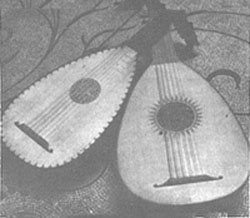|
It is believed by some that the poet Nizami�s twelfth century romance, Layla and Majnun, one of the most popular Persian love stories, may have been an inspiration for Romeo and Juliet. Hayy ibn Yaqzan (Alive, Son of Awake) by the twelfth century philos�opher, Ibn Tufail, considered by many to be the first real novel, was translated by Pocock into Latin in 1671 and by Simon Ockley into English in 1708. It bears close similarities to Defoe's Robinson Crusoe.47 The Thousand and One Nights and Omar Khayam's Rubaiyat were among the best loved and most widely read of Islamic literature. The fascination with Arabism, following the Hellenistic period of Louis XIV, is evident particularly in Shakespeare's characterizations of the Moors, Othello and the Prince of Morocco, in Christopher Marlow's Tamburlaine the Great, and George Peel's The Battle of Alcazar.48 Besides influencing "belles lettres," the Arabs developed a system of historiography called "isnad," documenting all reliable sources and providing the modern historian with accurate and comprehensive materials. Foremost among these historiographers was Ibn Khaldun, of whose Book of Examples Arthur Toynbee writes: "Ibn Khaldun has conceived and formulated a philosophy of history which is undoubtedly the greatest work of its kind that has ever yet been created by any mind in any time."49 Music The harp, lyre, zither, drums, tambourine; the flute, oboe and reed instruments are, today, either exactly as they were used from earliest Arab civilization, or variations of the early musical instruments of the
|
 The Oud |
 Rabab - One-string instrument |
|
 The magical 'ud | ||